Amazonia-1
EO
Imaging multi-spectral radiometers (vis/IR)
Land
Multi-purpose imagery (land)
Amazonia-1 is an Earth observation minisatellite mission of the Brazilian Space Agency (AEB), developed at the National Institute for Space Research (INPE) in Brazil. Launched in February 2021, its main goal is to monitor global deforestation, with a focus on the Brazilian Amazon rainforest.
Quick facts
Overview
| Mission type | EO |
| Agency | INPE |
| Mission status | Operational (nominal) |
| Launch date | 28 Feb 2021 |
| Measurement domain | Land |
| Measurement category | Multi-purpose imagery (land), Vegetation, Albedo and reflectance |
| Measurement detailed | Land surface imagery, Vegetation type, Earth surface albedo |
| Instruments | WFI (Amazonia-1) |
| Instrument type | Imaging multi-spectral radiometers (vis/IR) |
| CEOS EO Handbook | See Amazonia-1 summary |
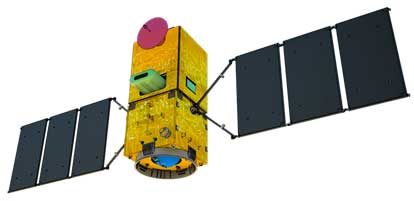
Summary
Mission Capabilities
Amazonia-1 is equipped with the multispectral radiometer WFI (Wide Field Imager), which monitors the Amazon vegetation and the coastal environment, being able to detect the extent of rainforest fires. It is also used for measuring the land cover and land mapping.
The mission’s imaging capability will be enhanced by employing a new instrument, the Advanced Wide Field Imager (AWFI).
Performance Specifications
The WFI instrument operates in three visible wavebands (0.45 - 0.50 µm, 0.52 - 0.57 µm, 0.63 - 0.69 µm), as well as in the near-infrared range 0.76 - 0.90 µm. It has a spatial resolution of 60 m at all wavelengths and a swath width of 740 km.
AWFI will acquire images in the near-infrared region, as well as in the visible spectrum (red, green, blue), at a spatial resolution of 60 m. With a swath width of 850 km, it will be able to revisit the same spot after five days.
Amazonia-1 maintains a sun-synchronous circular orbit, with an altitude of 752 km and an inclination of 98.4°.
Space and Hardware Components
Amazonia-1 is composed of two independent modules: a Service Module, which is the Multi-Mission Platform (MMP), and a Payload Module, which houses image cameras and equipment for recording and transmitting image data. The Thermal Control Subsystem (TCS) consists of active and passive thermal control elements in order to maintain the spacecraft’s components and structure within a controlled range of temperature throughout the mission.
The Amazonia-1 spacecraft has a mass of 637 kg, with a design life of at least four years. Its power is provided by two solar arrays and stored in Lithium-ion batteries.
Amazonia-1
Spacecraft Launch Sensor Complement References
Amazonia-1 is an Earth observation minisatellite mission of AEB (Agência Espacial Brasileira - Brazilian Space Agency) under development at INPE (National Institute for Space Research), São José dos Campos, SP, Brazil. The prime objective is to monitor deforestation around the world, in particular the forest in the Amazon region of Brazil. Amazonia-1 represents an important step in the construction of an integrated global earth observation network for the public good; it will also play a crucial role in helping other countries, especially in Africa, to monitor their own land use and forests. The Kongo rainforest is the second largest in the world after the Amazon and covers an area twice the size of France. The Brazilian Space Agency will make the data available free to the public and other Governments. 1) 2) 3)
Amazonia-1 is the optical earth observation satellite of National Institute for Space Research (INPE). This satellite would further strengthen the existing structure by providing remote sensing data to users for monitoring deforestation in the Amazon region and analysis of diversified agriculture across the Brazilian territory.
Amazonia-1 is the first Earth observation satellite completely designed, integrated, tested and operated by Brazil. INPE plans to launch two further satellites in the series. INPE of Brazil contracted Spaceflight Inc. of Seattle WA to secure the launch.
INPE has completed the process for contracting services that will put the Amazonia-1 into orbit, the first Earth observation satellite fully designed, assembled and tested in Brazil.
The first highly complex space system entirely Brazilian, Amazonia-1 is currently undergoing pre-launch tests at INPE's Integration and Testing Laboratory (LIT), in São José dos Campos (SP).
The Brazilian satellite images will be used to observe and monitor deforestation, especially in the Amazon region, as well as diversified vegetation and agriculture throughout the national territory.
With Amazonia-1, Brazil starts to dominate the complete development cycle of this type of satellite, from the project to the integration and operation in orbit. The project propels the Brazilian aerospace industry, by promoting 100% national technologies.
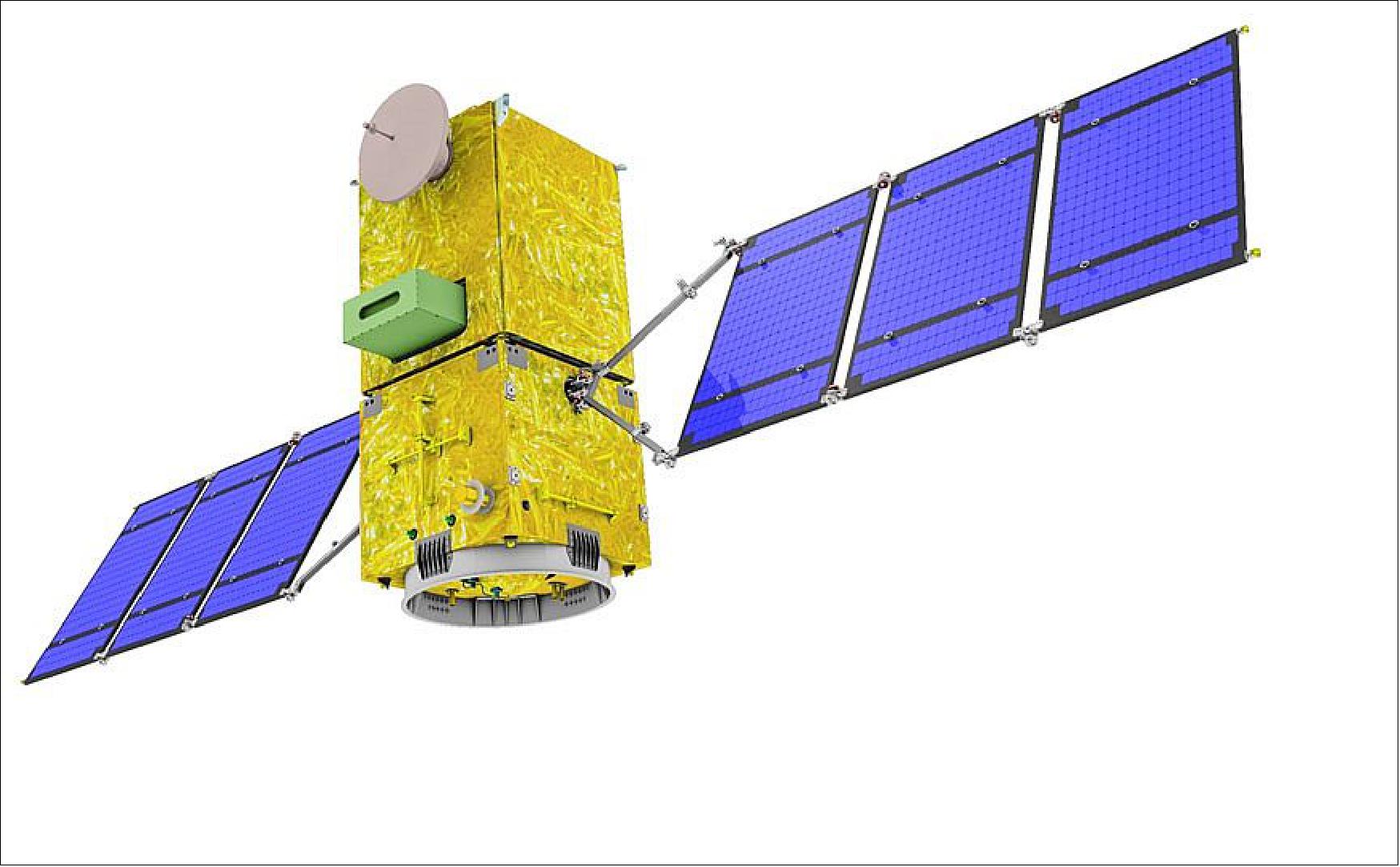
Spacecraft
The Amazon -1 spacecraft is the first land monitoring satellite made entirely in Brazil. It employs a new national platform design, referred to as MMP (Plataforma Multi-Missão - Multimission Platform) that will also be used in other satellites offered by the Brazilian Space Program: namely the scientific satellite Lattes-1, the MAPSAR Earth Observation radar, and the meteorological satellite of precipitation measures.
The Amazonia satellite series is composed by two independent modules: a Service Module, which is the Multi-Mission Platform (MMP), and a Payload Module, which houses image cameras and equipment for recording and transmitting image data.
The Amazonia-1 spacecraft has a mass of 637 kg with a design life of >4 years. Power is provided by Li-ion batteries and 2 solar arrays.
The Amazonia-1 Thermal Control Subsystem (TCS) consists of active and passive thermal control elements in order to maintain the spacecraft’s components and structure within a controlled range of temperature throughout the mission of the spacecraft, from the Beginning of Life (BOL) to the End of Life (EOL). The payload equipment, the propulsion subsystem components and batteries, along with their operational requirements, are the main drive to develop Amazonia-1 thermal control design and analysis.
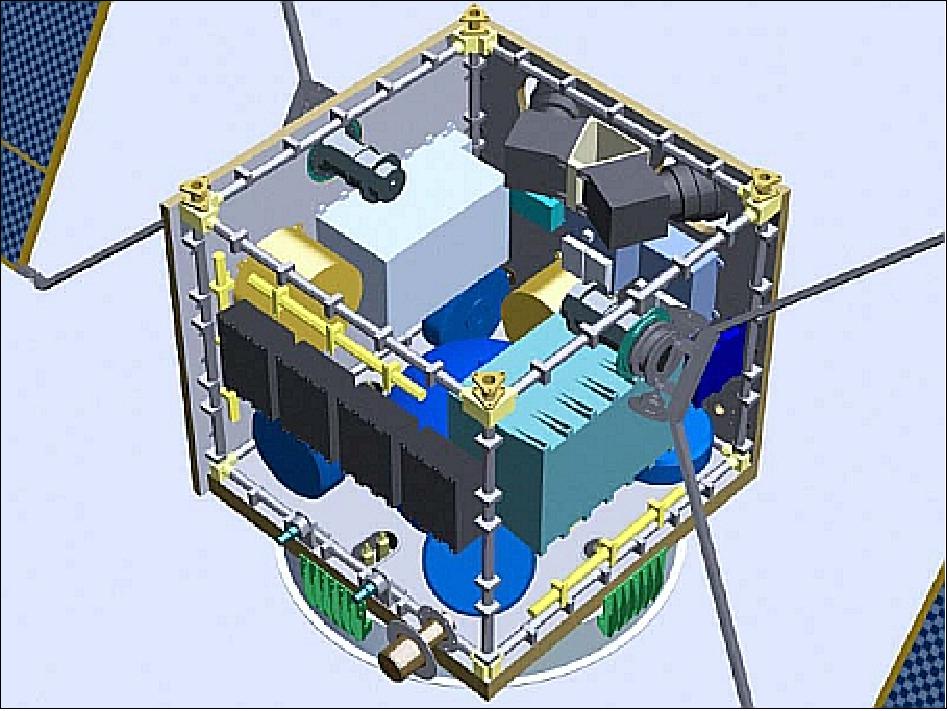
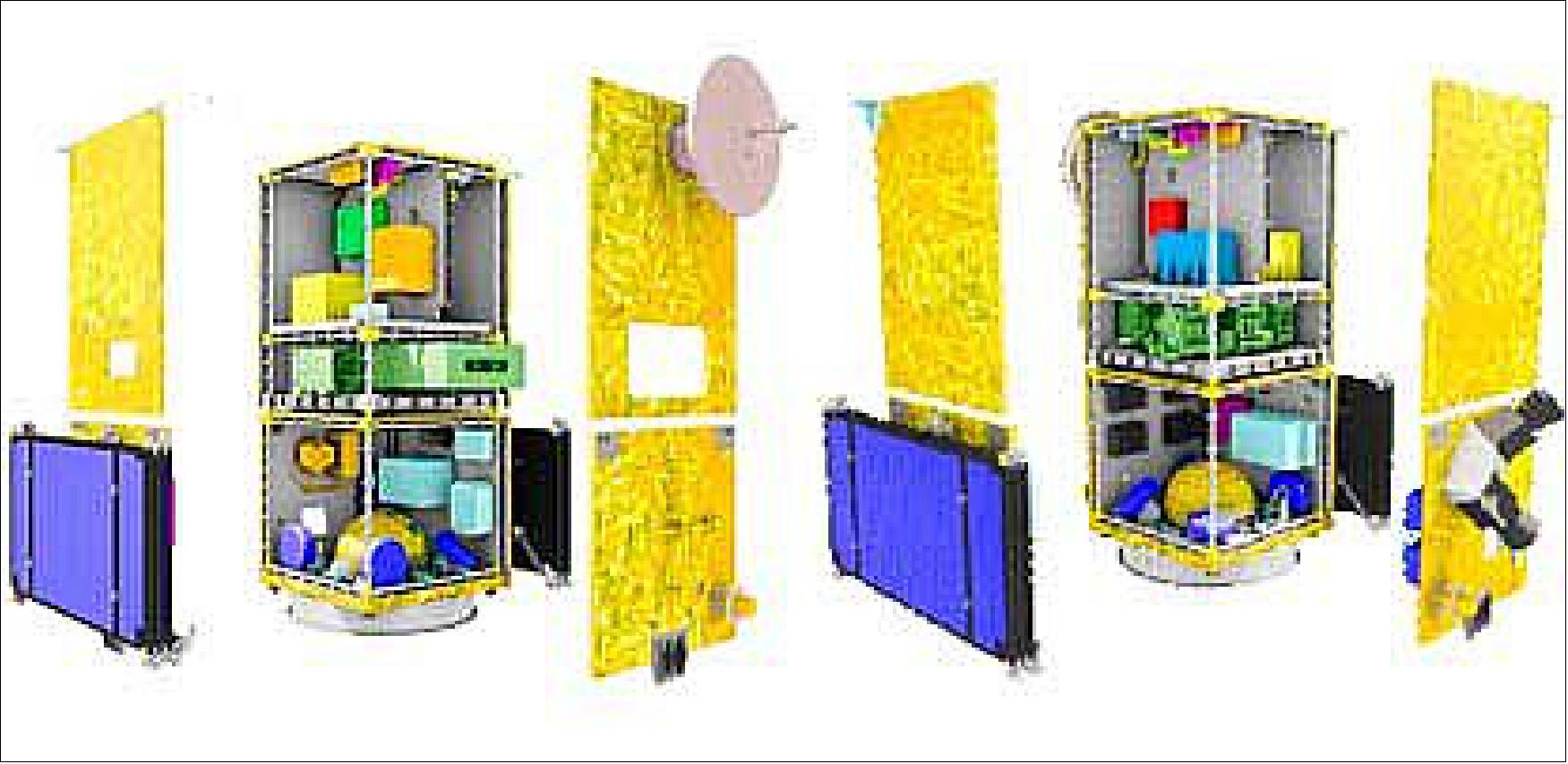
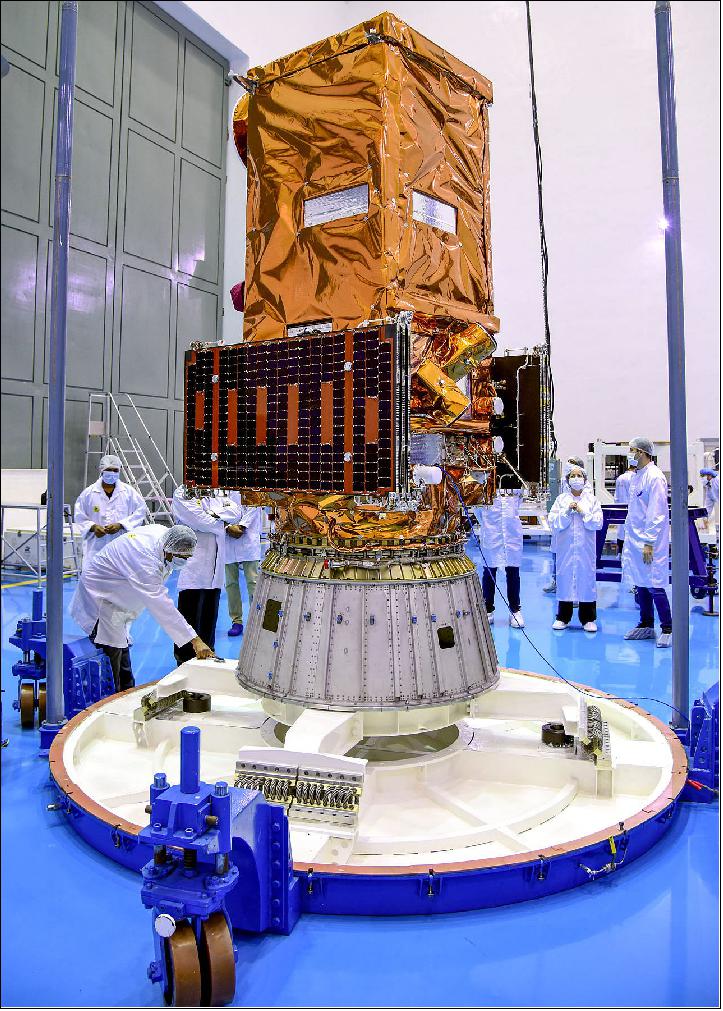
Launch
ISRO launched its first mission of the year on 28 February 2021 (04:54 UTC, corresponding to 10:24 IST), sending Brazil’s Amazonia-1 Earth observation satellite and 18 smaller payloads into orbit. The launch vehicle was PSDL-C51 in DL configuration and the launch site was SDLC (Satish Dhawan Launch Center) SHAR, Sriharikota, India. 4)
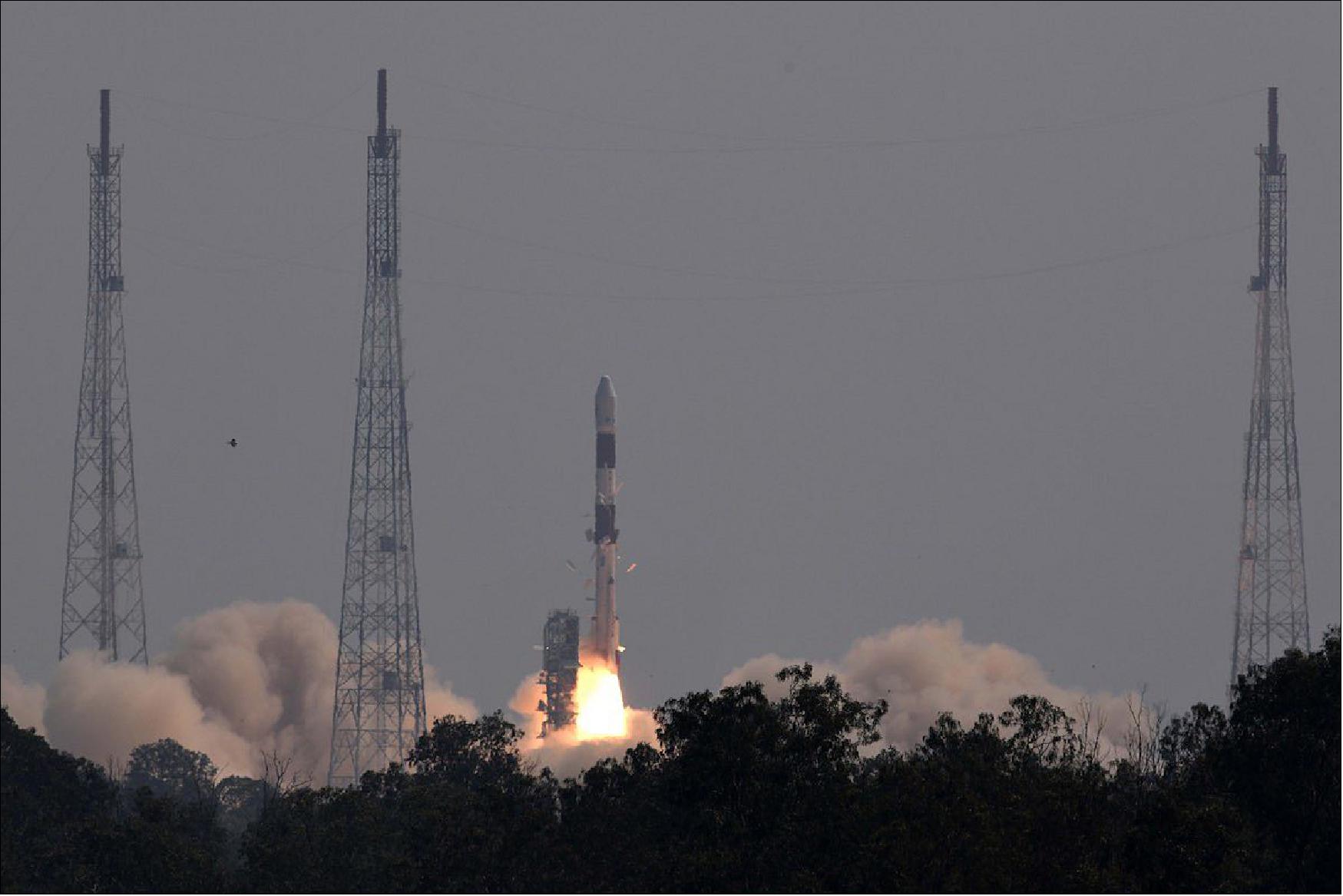
Orbit: Sun-synchronous circular orbit, altitude = 752 km, inclination = 98.4º.
PSLV-C51/Amazonia-1 is the first dedicated commercial mission of NewSpace India Limited (NSIL), a Government of India company under Department of Space.
After a flight of about 17 minutes 23 seconds, the vehicle injected the Amazonia-1 into its intended orbit and in the succeeding 1 hour 38 minutes, all the 18 co-passenger satellites successfully separated from the PSLV in a predetermined sequence.
The 18 co-passenger satellites onboard PSLV-C51 include four from IN-SPACe and fourteen from NSIL. Out of 4 satellites from IN-SPACe, three were UNITYsats designed and built as a joint development by Jeppiaar Institute of Technology, Sriperumbudur (JITsat), G.H.Raisoni College of Engineering, Nagpur (GHRCEsat) and Sri Shakti Institute of Engineering and Technology, Coimbatore (Sri Shakthi Sat) and one was Satish Dhawan Sat (SDSAT) from Space Kidz India. The fourteen satellites from NSIL carried were the commercial satellites from India (1) and USA (13).
With today’s launch, the total number of customer satellites from foreign countries placed in orbit by PSLV is 342 satellites from 34 countries.
Co-passenger payloads 5)
• SDSAT (Satish Dhawan Sat), a 3U CubeSat developed by Space Kidz India. The objective is to study the radiation levels/space weather and to demonstrate long range communication technologies.
• JITSAT (UNITYsat1), an Amateur radio / IoT satellite. UNITYsat is a combination of '3satellites', designed and built as a JITsat (Joint Development by Jeppiaar Institute of Technology, Sriperumbudur), g. H. Raisoni College of Engineering, Nagpur (GHRCEsat, UNITYsat2) and Sri Shakthi Institute of Engineering and Technology, Coimbatore (Sri Shakthi Sat, UNITYsat3). The satellite is intended to provide radio relay services.
Commercial co-passenger payloads
• SindhuNetra, a microsatellite of PESU / DRDO (India). A technology demonstration.
• SAI-1 NanoConnect-2, a 2U CubSat of UNAM (Universidad Nacional Autónoma de México), Mexico City, developed by experts from the Institute of Nuclear Sciences (ICN). The satellite is 100 percent Mexican in its technology, designs, conception. It has been done at our initiative, with our students.
• SpaceBEEs of Swarm Technologies, Palo Alto, CA, USA with 12 0.25U IoT CubeSats for 2-way satellite comminications and data relay.

Sensor Complement
AWFI (Advanced Wide Field Imager)
The Amazonia-1 mission’s main goal is to provide image data, improving the deforestation monitoring capability in the Amazon region. The use of a new instrument called Advanced Wide Field Imager (AWFI) with a 60-meter spatial resolution on board will improve the capability of the system (Scaduto et al., 2010). The current Wide Field Imager (WFI) camera acquires images in two spectral bands, while in the AWFI the images will be acquired in four bands.
Imager type | Pushbroom mode observations |
Spectral bands (µm) | 0.45-0.52 Blue |
Spatial resolution | 60 m |
Swath width | 850 km |
Revisite capability | 5 days |
The new addition to the satellite fleet would shorten the gap between flyovers to generate new images every day or two. That frequency increases the chances of getting clear pictures without cloud cover—a common problem in the rainforest—and gives authorities faster alerts about deforestation. 6)
A day can make all the difference,” says Cláudio Almeida, who coordinates INPE’s Amazonian monitoring program and oversees its official deforestation reports. With near–real-time monitoring, “enforcement teams can go to the right place at the right time,” he says.
Using homemade equipment gives Brazil the technological autonomy it has long desired, Almeida adds. He recalls a “data blackout” in 2012 when a problem with Landsat threatened to leave a gap in the deforestation reports. INPE had to buy expensive satellite data with poorer image quality from the U.K. government.
Amazonia-1 and its two planned companions will be a powerful research tool, says environmental modeling expert Britaldo Soares Filho at the Federal University of Minas Gerais, whose team relies on satellite data to model the spread of fire and its environmental consequences in the Amazon and neighboring biomes.
But Filho worries an unsupportive government will limit INPE’s ability to process the enormous volumes of data Amazonia-1 will produce. “It is not enough to invest in technology without investing in research and people,” he says. INPE’s budget and staff have been cut repeatedly since 2019, when Brazilian President Jair Bolsonaro declared the agency’s alarming data on deforestation to be false and ousted its director, physicist Ricardo Galvão.
The government’s proposed 2021 budget includes a 15% cut to INPE that has already prompted the cancellation of 100 fellowships, which support nearly one-quarter of the agency’s technical staff. Amazonia-1’s launch was nearly postponed after seven researchers on the project lost their grants. They’ve been reinstated until March with funds from the Brazilian Space Agency to make the launch possible.
Even with the new satellite, Brazil’s remote sensing capacity is far from ideal, Galvão says. The country would need “at least 30 other satellites like Amazonia-1 to meet its needs,” he says. And he’s skeptical that the current government will act on new evidence of deforestation. “I am sure INPE’s scientists will provide the data without bowing to any pressure, but I have doubts that the current government will value this data,” he says.
The Brazilian government has been sending mixed signals about its interest in remote sensing programs. In June 2020, the military at the Brazilian Ministry of Defense allocated 145 million real to buy an undisclosed satellite imaging system for Amazon monitoring, both for civilian and military use. That parallel strategy threatens INPE’s efforts to create and launch its own satellites, Galvão says. “The government should value our own technology.”
References
1) “INPE Agency Report,” URL: http://cimss.ssec.wisc.edu/itwg/itsc/itsc16/presentations/11_09_augusto.pdf
2) Thyrso Villela, “An Overview of the Brazilian Space Program,” 2011, URL: http://www.av.it.pt/workshops/docs/Brasil_Space_Thyrso_Villela.pdf
3) ”Amazonia-1,” INPE, URL: http://www.inpe.br/amazonia1/en/
4) ”PSLV-C51, the first dedicated launch for NSIL, successfully launches Amazonia-1 and 18 Co-passenger satellites from Sriharikota,” ISRO, 28 February 2021, URL:https://www.isro.gov.in/mission_PSLV_C51.html
5) ”PSLV-C51/Amazonia-1 Brochure,” ISRO, URL: https://www.isro.gov.in/media_isro/pdf/Missions/pslv-c51_newamazonia_01_-_brochure.pdf
6) Sofia Moutinho, ”Brazil’s first homemade satellite will put an extra eye on dwindling Amazon forests,” Science, 26 February 2021, URL: https://www.sciencemag.org/news/2021/02/
brazil-s-first-homemade-satellite-will-put-extra-eye-dwindling-amazon-forests
The information compiled and edited in this article was provided by Herbert J. Kramer from his documentation of: ”Observation of the Earth and Its Environment: Survey of Missions and Sensors” (Springer Verlag) as well as many other sources after the publication of the 4th edition in 2002. - Comments and corrections to this article are always welcome for further updates (eoportal@symbios.space).